Two days ago, we visited the Karnak Temple and today we are visiting its neighbor, the Luxor Temple. Between these two temples is a two-kilometer (8,900 ft) processional way which connects the two temples. Along the avenue are 1050 sphinx statues. Construction of the Avenue began during the New Kingdom era and was completed during the Late period during the reign of 30th Dynasty ruler Nectanebo I (380–362 BCE). The road was buried under layers of sand over the centuries and a variety of structures were built over the road without anyone knowing of its existence.
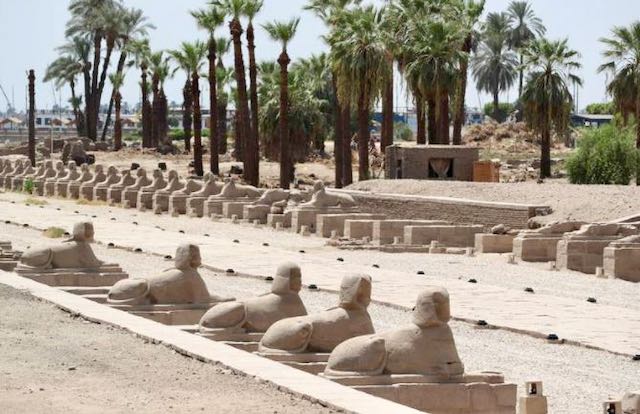
The first trace of the avenue was found in 1949 when Egyptian archaeologist discovered eight statues near the Luxor Temple with 17 more statues uncovered from 1958 to 1961 and an additional 55 unearthed from 1961 to 1964. From 1984 to 2000, the entire route of the walkway was finally determined, leaving it to excavators to uncover the road. On 25 November 2021, the avenue was opened to the public having concluded restoration works that took over seven decades to complete.
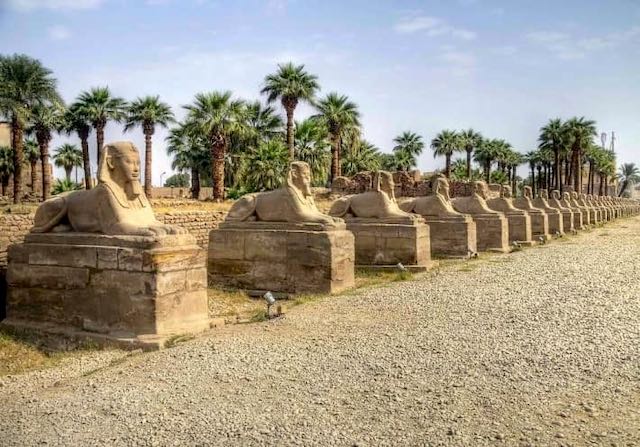

Our visit to the Luxor Temple was in the evening, under the stars with the temple lit up. The night visit emphasizes the grandeur of the architecture as seen by the shadows. Constructed approximately 1400 BCE, it is unlike the other temples in Thebes, as Luxor temple is not dedicated to a cult god or a deified version of the pharaoh in death. Instead, Luxor temple is dedicated to the rejuvenation of kingship; it may have been where many of the pharaohs of Egypt were crowned in reality or conceptually. Ramses II required his head priest to walk the sphinx path each morning bearing the inner sanctum statue, a show of Pharoah power.
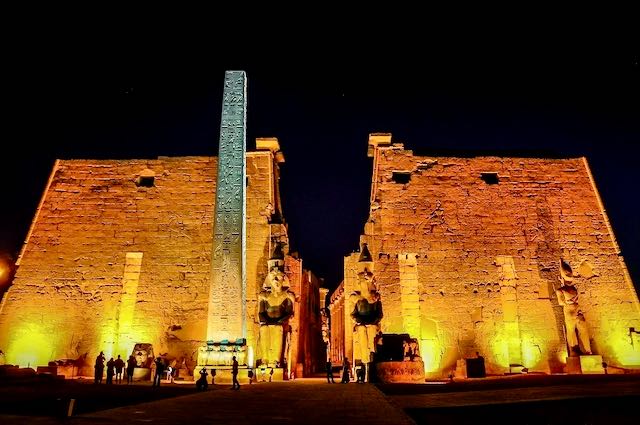
Towards the rear of the temple are chapels built by Amenhotep III of the 18th Dynasty (1550 to 1292 BCE), and Alexander (356 BCE – 323 BCE). Other parts of the temple were built by Tutankhamun and Ramesses II. Alexander the Great came to worship Egyptian deities, and a carved figure of him presenting gifts was seen in the inner sanctum.
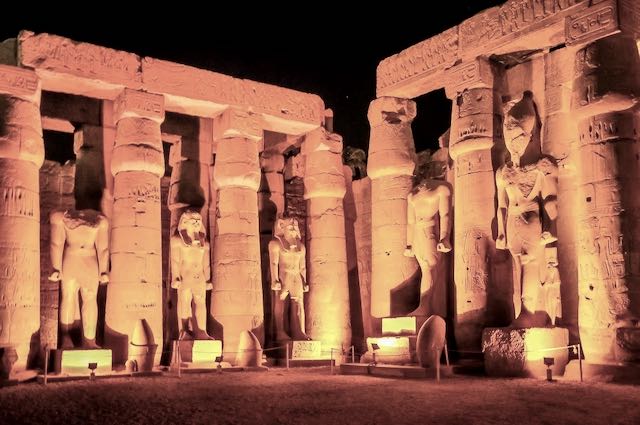
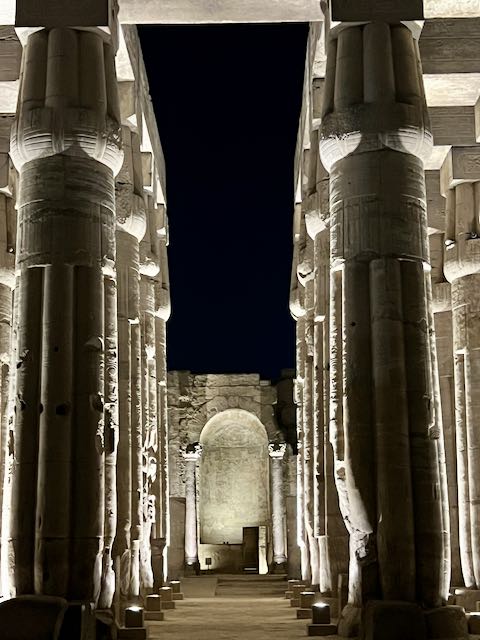
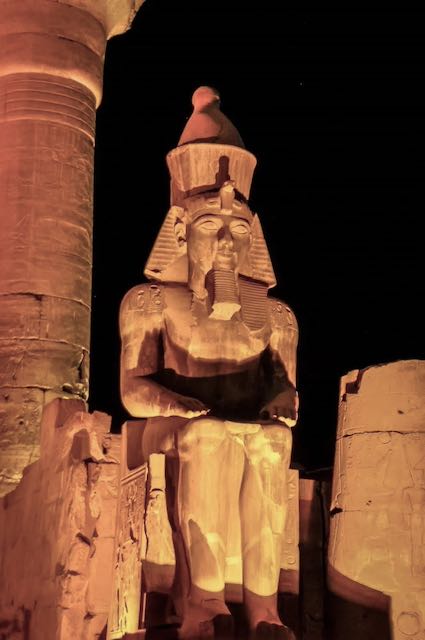
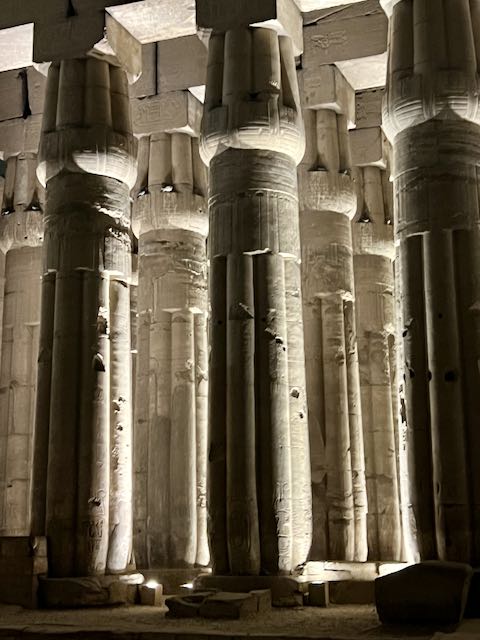
During the Roman era (30 BCE to CE 641), the temple and its surroundings were a legionary fortress and the home of the Roman government in the area. During the Roman period a chapel inside the Luxor Temple, originally dedicated to the goddess Moot, known as “the mother”, was transformed into a Tetrarchy cult chapel and later into a Coptic church. Many deity carvings were defaced to use the courtyard for Christian services, and plaster covered one wall to hold a Last Supper painting.
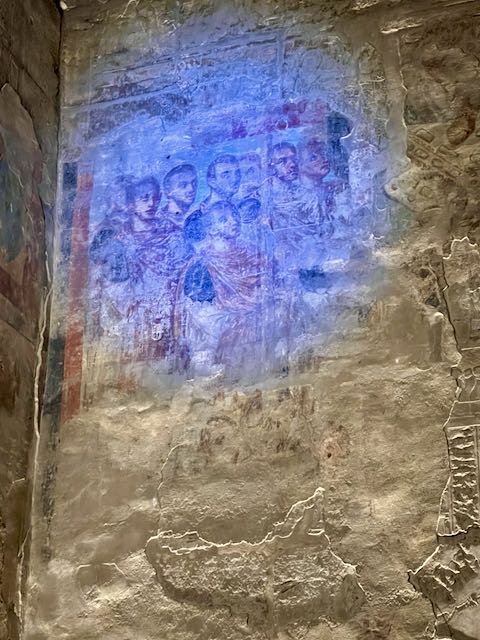
The courtyard was filled in even later and a mosque, Abu El-Haggag, built on top of it. The door of the mosque is visible above from the excavated courtyard.
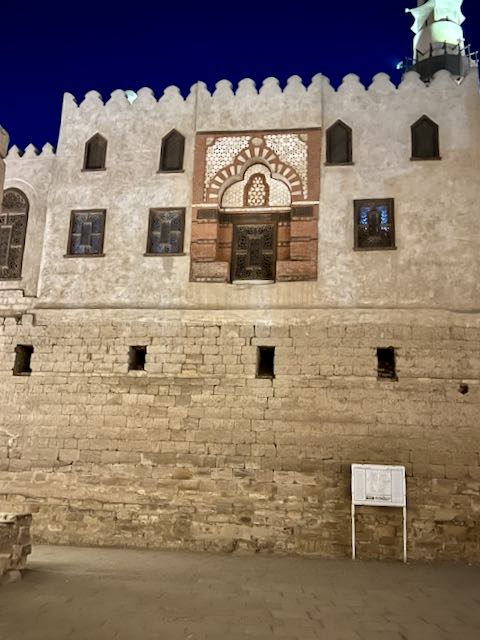
With our days events coming to an end, we headed back to the ship for a relaxing evening and to get ready for our next adventure the following morning.
I was there at age 20 during my wandering hippy days!
How wonderful that you were able to see the Avenue that was still being uncovered when we visited several years ago. Amazing history. I am so glad that you are having such a great tour, and I know how you are appreciative of this opportunity to travel to such historic sites.
A walk down memory lane!
Wonderful
“The Amazing Tour”